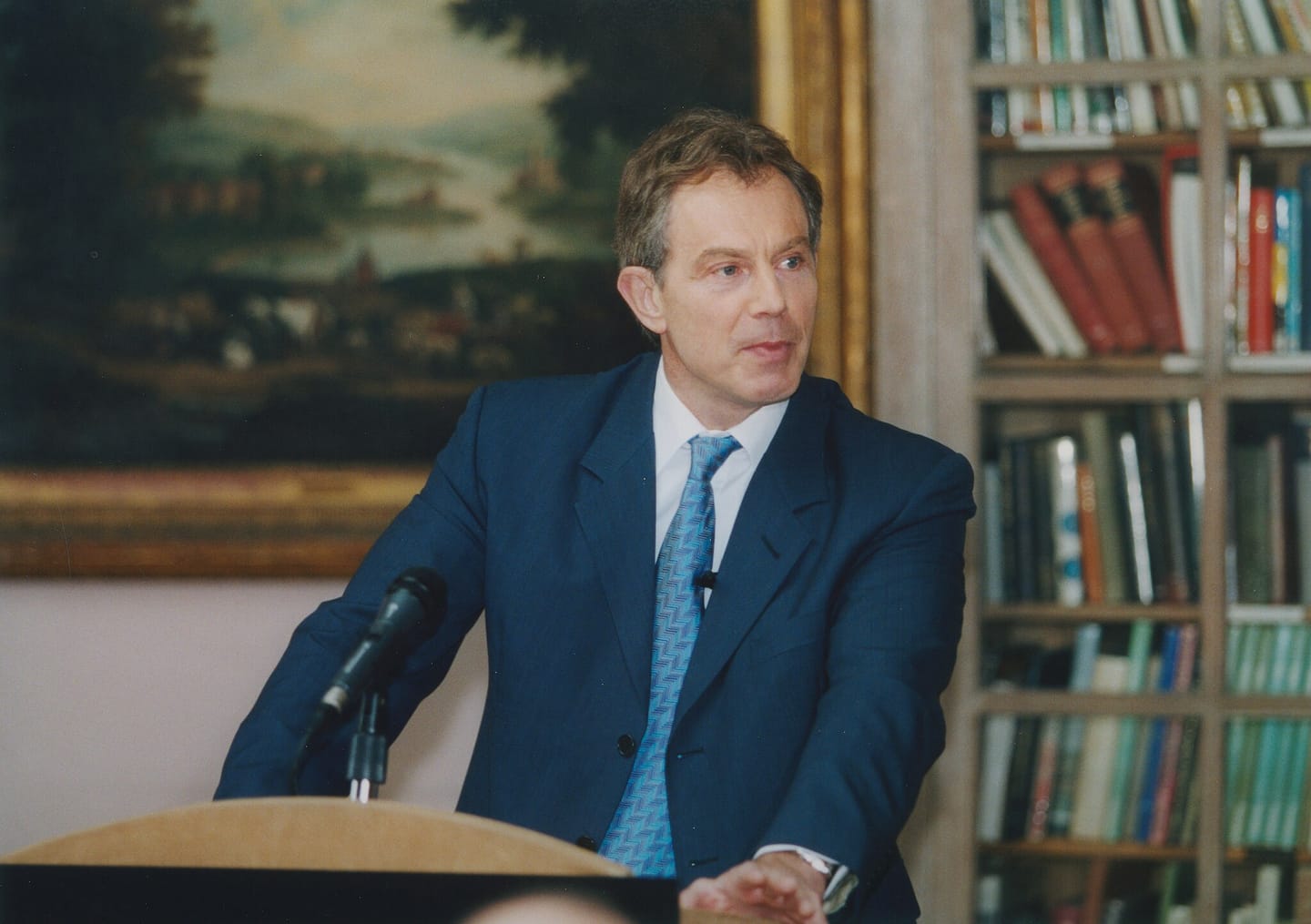Can a generative AI model perform critical discourse analysis at a level comparable to a trained scholar? This case study puts OpenAI’s o3 model to the test by asking it to analyse Tony Blair’s 1996 “stakeholder economy” speech—a foundational text in New Labour rhetoric. The model's analysis was then systematically compared with Norman Fairclough’s interpretation in New Labour, New Language? (2000), a landmark in critical discourse studies. Beyond testing content recognition, this exercise probes whether a large language model can identify rhetorical strategies, unpack ideological assumptions, and reflect on its own interpretations. The findings help assess the potential—and the limits—of using generative AI for nuanced textual interpretation in the social sciences.
Prompt 1
To begin, the model was given the full text of Blair’s 1996 stakeholder economy speech as a plain text file. It was then instructed to perform a detailed critical discourse analysis (CDA), focusing on key aspects such as rhetorical strategies, ideological assumptions, representations of social actors, and the framing of economic change and responsibility. The prompt explicitly required the model to rely solely on the speech itself—without referencing any external theories or frameworks—mirroring the expectations of an autonomous, text-internal CDA. This initial analysis served as the baseline for subsequent comparison.
Please conduct a detailed critical discourse analysis of Tony Blair’s 1996 speech introducing the concept of a “stakeholder economy”. The full speech is provided as a plain text file (Tony Blair (1996) Speech to Singapore Business Community, 8 January.txt). Please read the entire content of the file before beginning your analysis.
Your task is to produce a structured and in-depth interpretation that addresses the following elements. These are key areas you should cover, but you are not limited to them—feel free to include additional relevant observations where appropriate.
- Rhetorical strategies – How does the speaker seek to persuade? Consider the use of repetition, contrast, direct address (“you”, “we”), metaphor, simplification, or emotive language.
- Ideological assumptions – What underlying values and worldviews are embedded in the speech? What is assumed about the role of government, the market, the individual, and society?
- Construction of social actors and power relations – How are groups such as citizens, businesses, the state, or workers positioned? Who is given agency and voice, and who is marginalised or abstracted?
- Framing of economic change, individual agency, and collective responsibility – How are broader transformations represented? What kinds of actions or attitudes are promoted as necessary or desirable?
Please provide clear, descriptive explanations for each of your observations. Rather than simply listing techniques or ideological themes, explain how these elements work in context to produce meaning and legitimation. Use examples from the text wherever appropriate.
Do not refer to any specific theorists, authors, or frameworks at this stage. Your analysis should be text-internal and self-contained.
Output 1
The model delivered a structured and insightful analysis of Blair’s 1996 stakeholder speech, covering all key areas requested in the prompt. Its use of tables to present rhetorical strategies and actor roles was both clear and effective. Particularly strong was its identification of inclusive language, moral contrasts, and metaphors, all linked convincingly to political purpose. The model captured the speech’s dual appeal to economic rationality and ethical consensus with notable precision.


Ideologically, the analysis highlighted Blair’s vision of the state as an enabler, his acceptance of global competition, and the fusion of cohesion with productivity. It also addressed asymmetries in voice and agency, especially in the portrayal of marginalised groups. While the output did not rely on any external framework, it demonstrated a remarkable capacity for text-internal interpretation—offering a baseline that is both coherent and critically aware, even before comparison with Fairclough.

Prompt 2
In the second stage, the model received Chapter 3 of Norman Fairclough’s New Labour, New Language? (2000) as a PDF file. This chapter contains a detailed critical discourse analysis of Blair’s 1996 stakeholder economy speech. The task was to compare its own previous interpretation with Fairclough’s reading—identifying areas of agreement and divergence in a structured table, followed by a reflective assessment of what had been missed or misunderstood. The goal here was not just to benchmark content accuracy, but to test the model’s ability to revise, contextualise and critically reassess its earlier analysis in light of expert interpretation.
You are now provided with a PDF file of Chapter 3 from Norman Fairclough’s New Labour, New Language? (2000). In this chapter, Fairclough presents a critical discourse analysis of Tony Blair’s 1996 speech on the “stakeholder economy”.
Your task is as follows:
Compare the previous discourse analysis of Blair’s speech with Fairclough’s interpretation in the attached chapter.
Create a structured table with the following columns:
- Theme or feature (e.g. rhetorical strategies, ideological assumptions, agency, framing of economic change)
- Previous interpretation
- Fairclough’s interpretation
- Agreement / Difference (brief description of overlap or divergence)
Reflect critically on the initial analysis.
After completing the table, write a brief analytical reflection addressing the following:
- What significant elements did Fairclough identify that were previously overlooked?
- In what ways did the previous interpretation align or misalign with his?
- What should be revised, expanded, or reconsidered in light of this comparison?
Output 2
The second output demonstrated the model’s ability to engage in comparative reflection with surprising sophistication. It not only aligned its earlier observations with Fairclough’s, but also recognised where its own reading had lacked structural depth or discursive context. The use of a thematic table allowed for clear mapping of overlaps—such as the emphasis on inclusive rhetoric and the enabling state—but also revealed how Fairclough’s interpretation added layers of meaning through concepts like logical entailment, strategic absences, and transnational ideological borrowing. The AI’s acknowledgment of these gaps shows a meaningful capacity for second-order analysis.


Most notably, the model identified key areas it had previously underdeveloped: the functional role of list-making, the discursive silencing of transnational capital, and the temporality of political language. Its suggestions for revision—such as incorporating equivalence chains and framing discourse as historically contingent—were not only accurate but well contextualised. While the analysis still lacks the theoretical anchoring and historicised subtlety of Fairclough’s work, it demonstrates a striking ability to revise, expand, and self-correct—an essential competence for any critical discourse analyst, human or machine.

Recommendations
Generative AI models like OpenAI’s o3 can produce impressively structured and insightful discourse analyses, but they still miss key dimensions such as discursive absences, historical positioning, and intertextual layering. As this case showed, a full analysis requires theoretical grounding and human judgment. That said, the model’s capacity for self-correction and comparative reasoning is encouraging. Used carefully, GenAI can support critical discourse work—though it cannot fully perform it on its own.
The authors used OpenAI o3 [OpenAI (2025) OpenAI o3 (accessed on 5 May 2025), Large language model (LLM), available at: https://openai.com] to generate the output.






